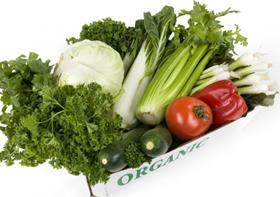
With more people buying local and organic food, consumers should know the difference between the two so they recognise what they’re buying – but nearly one in five still confuse the terms.
That is the verdict of newly published research carried out by the University of Florida (UF), in partnership with three other universities.
The study aims to help local and organic food producers and sellers target their marketing messages to reinforce or dispel consumers’ perceptions.
The organic food industry has spent millions of dollars building brand awareness, only to see some consumers confuse “organic” food with “local” food products, said Ben Campbell, a University of Connecticut extension economist and the study’s lead author.
Hayk Khachatryan, a UF food and resource economics assistant professor, worked with Campbell and others to survey 2,511 people online in the US and Canada in 2011, and found 17 per cent thought the terms were interchangeable, the study said.
“If consumers can distinguish between local and organic, then by buying organic, they will be able to reduce their exposure to synthetic pesticides,” said Khachatryan, with the Mid-Florida Research and Education Center in Apopka, part of the Institute of Food and Agricultural Sciences. “However, there is no guarantee that organic is grown locally. Before reaching the consumer, organic produce may travel long distances, which involves some level of environmental footprint.
By the same token, he noted that locally produced food may not be the most sustainable choice, if same or better quality produce can be grown and transported less expensively from elsewhere.
Another finding showed 22 per cent of consumers incorrectly thought 'local' means non-genetically modified. Now that several states have, or are now debating GMO regulations, it’s essential that consumers know that a locally labeled product does not imply non-GMO, Campbell said.
“We are not saying GMO is bad or good, but rather that local does not imply GMO-free,” he said. Local and organic products have seen increasing consumer demand over the last decade, with sales of organic products reaching US$26.7bn in the US and US$2.6bn in Canada in 2010, according to the Organic Trade Association, a group that promotes organic food producers and related industries.
Exact figures for locally grown food are tougher to come by, but recent estimates indicate sales of local products were US$4.8bn in the US in 2008, according to a US Department of Agriculture study.
One factor clouding consumers’ understanding is that Canada is changing its definition of “local” food, and the definition of “local” food varies by jurisdiction in the US.
US and Canadian governments both mandate organic production to mean grown without synthetic pesticides, among other things. The USDA organic seal verifies that irradiation, sewage sludge and genetically modified organisms were not used.



